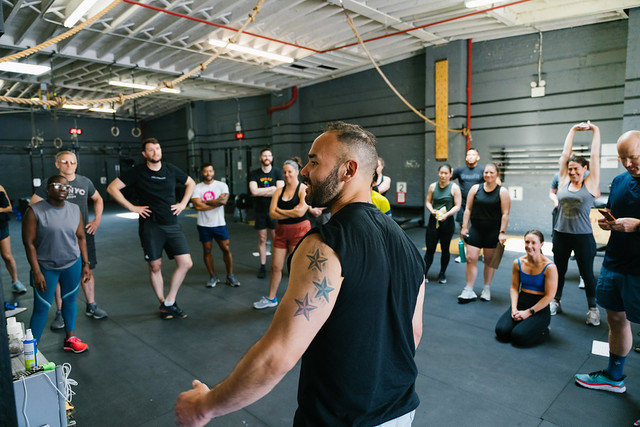How does shopping small and independently affect the environment?
You may not realize it but shopping at large companies such as H&M, Shein, Zara, and many others negatively affects the environment. It is important to shop locally and at small businesses. When you shop locally, you support your community and the people surrounding you. There are many benefits of shopping locally. For instance, it has a positive impact on the environment by reducing waste, conserving water, reducing emissions and there is more transparency of where small businesses source their products.
Small businesses positively affect the environment by conserving water. Independently owned clothing uses less water by choosing water-efficient fabrics to create their clothing. They also used recycled materials which is a benefit because materials aren’t going to waste and are recycled into other products. These businesses also use less plastic than a larger fast fashion  company would as they are locally made and sourced. Since the majority of independent businesses are locally sourced they eliminate their carbon footprint by getting items and resources locally reducing the length of transportation. The use of sustainable products is also a big part of independent businesses. Many places use organic and eco-friendly products such as natural dyes, organic cotton, and other materials. With the use of these products, it is giving you a higher quality piece of clothing, which will assure you higher quality and longer use whereas buying from larger companies that are imported will tend to wear easily and fade faster. Another big part is buying locally, they tend to have fewer items, which means they are making their clothing in smaller quantities which eliminates the excess waste that larger companies produce.
company would as they are locally made and sourced. Since the majority of independent businesses are locally sourced they eliminate their carbon footprint by getting items and resources locally reducing the length of transportation. The use of sustainable products is also a big part of independent businesses. Many places use organic and eco-friendly products such as natural dyes, organic cotton, and other materials. With the use of these products, it is giving you a higher quality piece of clothing, which will assure you higher quality and longer use whereas buying from larger companies that are imported will tend to wear easily and fade faster. Another big part is buying locally, they tend to have fewer items, which means they are making their clothing in smaller quantities which eliminates the excess waste that larger companies produce.
Shopping locally benefits the environment in so many positive ways and has so many benefits on why you should shop at your local small businesses and support the community around you. Not only are you benefiting the environment, but you are getting higher quality products and supporting your friends, family, and community around you.
Top 10 Small Businesses in Minnesota
- Primp– Primp is a small local boutique that has 3 locations in Excelsior, St Paul and White Bear Lake. Primp is a women’s boutique that offers trending, seasonal and fashionable clothing for all people and you are guaranteed to find something you love.
- Pip and pal– Pip and pal is a baby and child clothing boutique located in excelsior mn. They offer high end and high quality clothing for children and infants. Pip and pal is locally sourced and hand made. They offer a small selection of handpicked modern clothing items.
- Equation– Equation is a small boutique that has 2 locations, one in Minneapolis and the other in excelsior. Equation offers many different styles of high end clothing for women ranging from shirts to sweaters and blouses. They also offer accessories like sunglasses, jewelry and bags. This is a perfect place to shop if you’re trying to up your style.
- Jaxen grey– Jaxsen grey is a new men’s clothing store founded in 2019 with 2 locations both in Minneapolis. Jaxsen grey ensures men find something perfect for them, and allows customers to try new products and find the perfect fit.

- Idun– idun is a women’s boutique located in St paul MN. Idun is a boutique that allows women to find their own style and express themselves individually through their boutique. Idun offers timeless pieces that are interchangeable for any occasion.
- Blackblue– Blackblue is a boutique for men and women located in the historic cathedral part St. Paul MN. Blackblue has a wide range of clothing mainly focused on the tried and true. They are domestically produced and have design techniques that are relevant after 100+ years.
- PARC- Parc is a clothing boutique located in Minneapolis MN. PARC brings ethical and sustainable fashion to inspire others who are seeking quality over quantity. They have all styles of clothing for any occasion.
- Enchaté- Enchaté is a women’s boutique located in Stillwater. Enchatés goal is to bring both fashion and fun into the boutique. They source all their products from LA and NYC to bring fashion you typically cant find in the midwest to their boutique.
- Bluebird boutique- Bluebird is a premier contemporary women’s boutique located in Edina Minnesota. They have a wide range of high end clothing from many different brands that will assure you to find something you love.
- Golden rule- Golden rule is a female founded boutique located in Excelsior MN that offers thoughtful pieces. The golden rules motto is to support and promote kindness in the community. It’s a place to come together and hold a space for one another.
Is fast fashion killing the planet?
You may not realize it, but all the large stores that you shop at are part of fast fashion that is killing the planet. The larger companies like Zara, H&M, Shein, American Eagle, and Forever 21 are all killing the planet. A majority of these companies tend to be cheaper and have a majority of items that are currently trending on social media, which is why they are appealing for people to shop at.
There are various factors that go into fast fashion. Some of those being wear and tear, poor quality materials, elevated usages of water, causing pollution, higher carbon emissions, and poor conditions for workers.
With the rapid rate of production for clothing it results in brands pressuring suppliers to produce clothes as quickly, and inexpensively as possible. Incorporating such meager materials leads to objectively lower quality materials which causes these apparel items that are purchased at said stores to only be able to be worn a couple of times before damage is noticed. Due to these products being made with cheap materials, once you wash them they will start to fall apart. Over time you may start to notice frills, pealing or tears, and holes in these clothing items. It is estimated that clothing purchased from larger companies are worn approximately ten to fourteen times before people start to notice an “outdated” look to the clothing. Countless of these clothing items get thrown out, and will end up in landfills after being worn only a few times.
Fast fashion uses nearly ninety three billion cubic meters annually. This is substantially more than what small independent, or family owned businesses would do to the fact fast fashion creates clothing in much larger quantities over quality, compared to these smaller companies. These large companies’ water usage is concentrated into areas such as cotton farming and textile dying. Textile dying is responsible for nearly 20% of global industrial wastewater which leads to excess water pollution. With these companies that use large amounts of water to create their clothing, it causes higher demands on water which leads to lack of water in areas that already face water scarcity. Because of the use of water in these large fast fashion companies it leads to major water pollution. While these companies are creating large quantities of clothing they use a handful of harmful chemicals that create microplastics. These microplastics then create a large volume of textile waste that ends up sitting in landfills for years. Some of the chemicals that end up in our water systems are oils, dye, and pesticides.
When these chemicals enter our water system they are able to make their ways into nearby streams, and groundwater that is used for irrigation which will contaminate crops that are used for human consumption. Some people may not realize it but the clothing they buy is leaving its own carbon footprint. In total, a rough estimate of 1.2 billion tons of carbon emissions are released by the fashion industry every year. With people only wearing clothes a few times, it’s increased the amount of discarded items and fuel overconsumption and overproduction.
There are continuous factors that lead to the fashion industry’s carbon footprint, like the amount of waste sent to landfills, the CO2 emissions during the manufacturing process, and the water that is being polluted during these processes. If nothing changes in these companies that produce mass amounts of clothing, it is predicted that the fashion industry could be accountable for 26% of carbon emissions by the year 2050.The people that work in these factories to make these large quantities of clothing also face their own set of challenges.
Fast fashion harms workers by exploitative labor practices, low income wages, as well as unsafe working conditions. These workers are forced to sit in a factory for hours on end in order to create these items. Since there can be a scarce number of workers it leads to current workers being forced to stay longer and work harder to ensure clothing stores are receiving their clothing on time. These workers often tend to be women and young children who often are receiving either minimum wage or below minimum wage. These workers constantly are working long hours that can end up being around sixteen labor intensive hours. While working in these factories the workers are also exposed to harsh chemicals such as formaldehyde, and dimethylacetamide which can lead to many underlying health risks to the reproductive organs.
After reading this I hope you take a second before you purchase clothing from larger stores to think about these factors that it took to get these items onto the sales floor and how they are affecting the world, and many humans at the same time.









